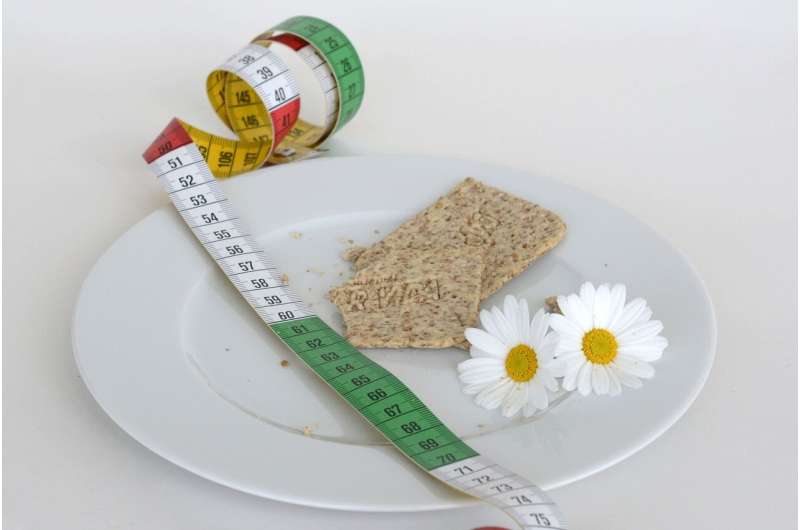This article has been reviewed according to Science X's editorial process and policies. Editors have highlighted the following attributes while ensuring the content's credibility:
fact-checked
proofread
Very low calorie diets safe for teens with obesity when monitored by a dietitian, say researchers

Short-term very low calorie diets are safe for teenagers living with moderate to severe obesity when closely monitored by an experienced dietitian, says new research to be presented at the European Congress on Obesity (ECO 2024).
In addition, many of the adolescents who took part in the Australian study found a very low calorie diet to be an acceptable way to lose weight, despite experiencing side effects.
Very low energy diets (VLED) typically involve taking in ≤ 800 calories per day and include meal replacements (bars and shakes) to ensure all essential nutrient requirements are met. VLEDs provide an alternative to weight loss treatment for young people who do not respond to conventional diet and exercise programs and may be used instead of bariatric surgery as a means of transitioning to a healthy, balanced diet.
Although studies have shown that VLEDs can lead to rapid weight loss in young people, there is very little data on general side effects (e.g., headache, fatigue, muscle cramps, constipation) and the acceptability of VLEDs in young people. There is also limited data on the impact of VLEDs on the growth, heart health and psychological well-being of young people and, as a result, some physicians have been reluctant to use them in this age group.
To learn more, Dr. Megan Gow, of Children's Hospital Westmead Clinical School, The University of Sydney, Westmead, Australia, and colleagues carried out a sub-analysis of data from Fast Track to Health, a 52-week study into the acceptability of different eating plans to adolescents with obesity.
Data from the first four weeks of Fast Track to Health, during which participants followed a nutritionally balanced VLED to kick-start their weight loss, was included in the sub-analysis.
For the study, 141 (70 female) participants aged 13–17 years with obesity and at least one obesity-related complication, such as high blood pressure, insulin resistance or dyslipidemia, consumed 800 calories a day from either 4 Optifast formulated meal replacement products per day (shakes, soups, bars and/or desserts), with low carbohydrate vegetables (for example, broccoli, celery, capsicum, mushrooms and tomatoes) and 1 teaspoon of vegetable oil, or three Optifast formulated meal replacements and one meal consisting of 100g–150g lean, cooked meat, low carbohydrate vegetables and 1 teaspoon vegetable oil.
A dietician provided support at least weekly. Weight was recorded at baseline and week 4 and side-effects were recorded at day 3/4 and after 1, 2, 3 and 4 weeks. The adolescents also filled in a survey about how acceptable they found the VLED, including what they liked most and least.
Almost all the adolescents (134/141) completed the VLED (average age of 14.9 years, 50% male), despite side-effects being very common. Average weight loss was 5.5kg (12lb).
Nearly all (95%) experienced at least one side-effect during the VLED and most (70%) experienced at least three side-effects. Hunger, fatigue, headache, irritability, loose stools, constipation, nausea and lack of concentration were most common. Seven participants experienced viral infections.
Side-effects were most common at the end of week 1 and experiencing more side-effects at day 3-4 was associated with greater weight loss at the end of the 4 weeks, possibly indicating increased adherence to the VLED.
The adolescents rated the intervention 61/100 for "easy to follow" (easy = 100, difficult = 0) and 53/100 for "enjoyable to follow" (enjoyable = 100, not enjoyable = 0 points).
Losing weight (34% of participants) and the prescriptive structure (28% of participants) were the most-liked aspects of the VLED intervention. The restrictive nature (45% of participants) and taste of meal replacement products (20% of participants) were liked least.
The researchers conclude that a health professional-monitored VLED can be implemented safely in the short-term and, despite side-effects, is acceptable for many adolescents with moderate to severe obesity.
Dr. Gow says, "More research is required to determine who would be most suited to a VLED. However, given the associated rapid weight loss, their use should be emphasized in clinical practice guidelines for the treatment of severe obesity and obesity-related complications in adolescents, especially before pharmacological or surgical intervention.
"Adolescents who are seeking treatment for their obesity should see their family doctor to discuss treatment options."





















